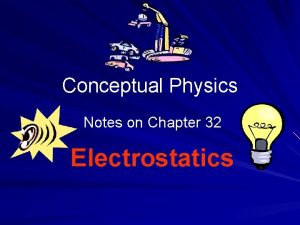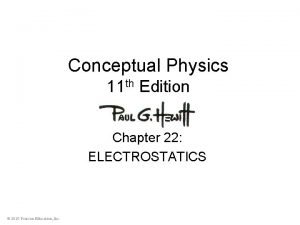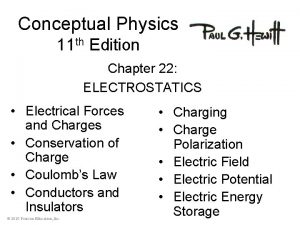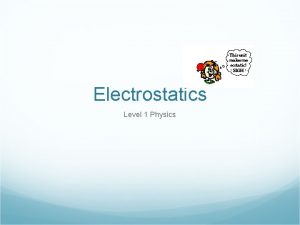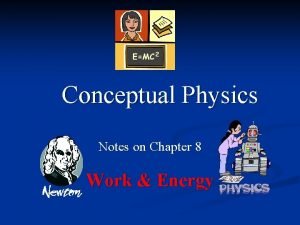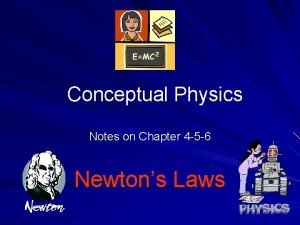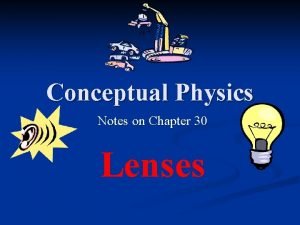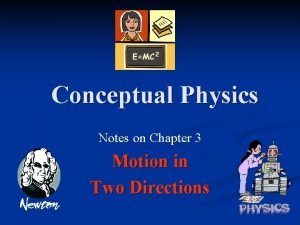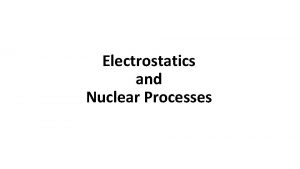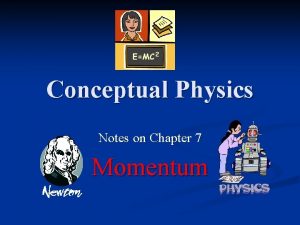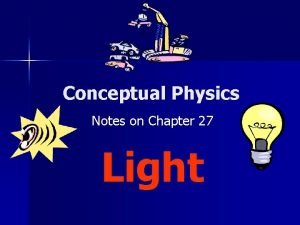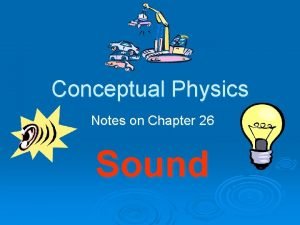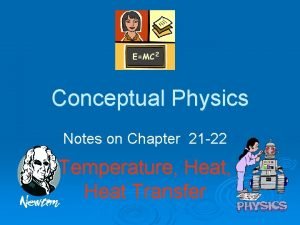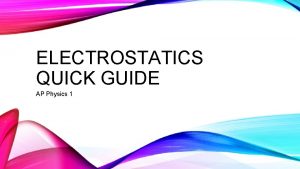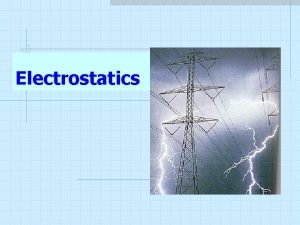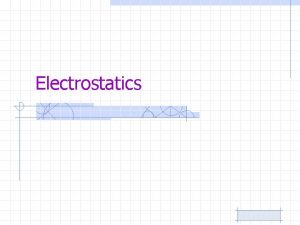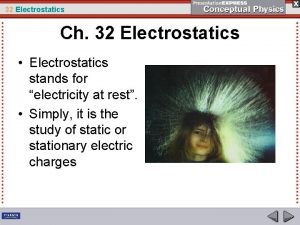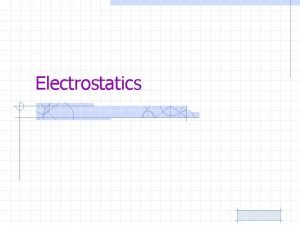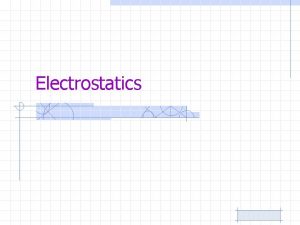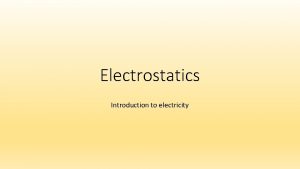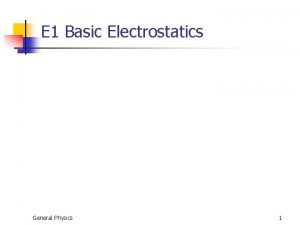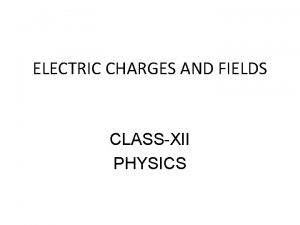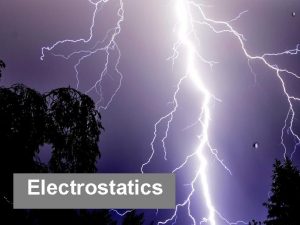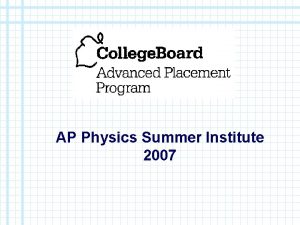Conceptual Physics Notes on Chapter 32 Electrostatics Electrostatics














- Slides: 14

Conceptual Physics Notes on Chapter 32 Electrostatics

Electrostatics is electricity at rest --- non flowing!

Electrostatics is about atoms and parts that make up atoms: Positive charges PROTONS Negative charges ELECTRONS Neutral charges NEUTRONS

Electrostatics Important facts of Atoms: Atoms are neutral so there are equal number of protons and electrons. Center of atom is the Nucleus - made up of protons and neutrons. Electrons “orbit” around the nucleus. All electrons are the same (same mass and charge), all protons are the same and all neutrons are the same.

Electrostatics LIKE CHARGES REPEL OPPOSITE CHARGES ATTRACT

Electrostatics All atoms are neutral by nature. If one electron (negative charge) is removed, a ION is produced. Ions can be positive or negative. Conservation of charge states the no charge can be created or destroyed

Electrostatics COULOMB’S LAW Coulomb’s law is similar to Newton’s law of gravity and shows how forces between two atoms attract or repel each other.

Electrostatics Newton’s Law : F = G m 1 m 2 / d 2 Coulomb’s Law : F = K q 1 q 2 / d 2 (NOTE --- K & q are different only) (Note K = 9, 000, 000 Nm 2/C 2 )

Electrostatics If an object allows electrons to flow from one place to another, it is said to be a CONDUCTOR. If a material does not then it is a INSULATOR.

Electrostatics All substances can be arranged in order of their ability to conduct electricity. Some materials can be made to act as a conductor and as a insulator --SEMICONDUCTOR.

Electrostatics Ways to charge objects by: -- Friction -- Contact -- Induction

Electrostatics FRICTION: When electrons are transferred by friction from one object to another.

Electrostatics CONTACT: When electrons are transferred from one object to another by direct contact without rubbing.

Electrostatics INDUCTION: When electrons are caused to gather or disperse by the presence of a nearby charge (without physical contact)
 Chapter 32 electrostatics conceptual physics
Chapter 32 electrostatics conceptual physics Conceptual physics chapter 22: electrostatics answers
Conceptual physics chapter 22: electrostatics answers Conceptual physics chapter 22 electrostatics
Conceptual physics chapter 22 electrostatics Electrostatics conceptual questions
Electrostatics conceptual questions Conceptual physics notes
Conceptual physics notes Conceptual physics chapter 4
Conceptual physics chapter 4 Conceptual physics chapter 30 lenses pdf
Conceptual physics chapter 30 lenses pdf Conceptual physics notes
Conceptual physics notes Physics classroom electrostatics
Physics classroom electrostatics Conceptual physics momentum
Conceptual physics momentum Conceptual physics chapter 35
Conceptual physics chapter 35 Conceptual physics chapter 33
Conceptual physics chapter 33 Chapter 27 light
Chapter 27 light Conceptual physics chapter 26
Conceptual physics chapter 26 Conceptual physics chapter 21
Conceptual physics chapter 21
